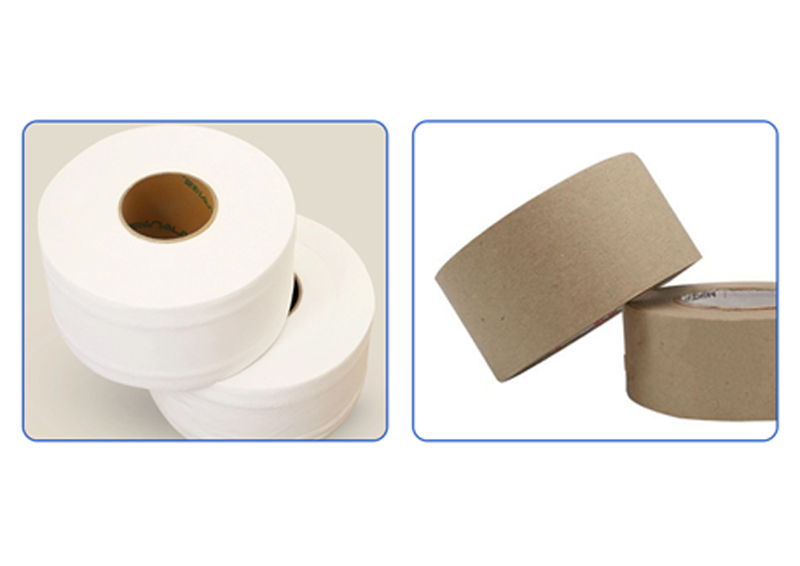Magine cutting a roll of expensive silk fabric. A slight tremor of your hand could ruin the entire roll. Similarly, for a slitter rewinder, precision is of utmost importance when slitting materials such as films, papers, or even lithium battery electrodes. But how exactly does it achieve high-precision slitting? Let’s explore the key elements behind this impressive functionality.
The cutting tools of a slitter rewinder are the primary determinants of slitting accuracy, much like precision scalpels in a surgical operation. There are two commonly used types: circular knives and straight knives.
Circular knives are designed for soft or thin materials, such as plastic films and papers. During operation, multiple circular knives are mounted side by side on a rotating shaft. They work like a row of sharp, spinning gears, smoothly and evenly cutting through the material. On the other hand, straight knives are typically used for harder or thicker materials, including metal foils and thick cardboard. Their up-and-down reciprocating motion allows them to slice through these materials as cleanly as scissors.
To ensure top-notch accuracy, the manufacturing of these cutting tools demands extreme precision. The knife edges must be sharp and uniformly thick, with errors controlled within the micrometer range. Additionally, the calibration of concentricity and spacing during tool installation is crucial. Even a tiny deviation can lead to inconsistent slitting widths, compromising the quality of the final product.
During the slitting process, maintaining a stable tension in the material is essential. Without proper tension control, wrinkles and stretching deformations can occur, significantly affecting slitting precision. This is where the tension control system plays a vital role, acting as a precise “conductor” that regulates the tightness of the material.
The system continuously monitors the material tension in real-time through tension sensors. When the tension exceeds the set threshold, the sensors send feedback signals. In response, the control system automatically reduces the rewinding speed or increases the unwinding speed to relax the material. Conversely, when the tension is too low, it makes the necessary adjustments to tighten the material. This dynamic adjustment mechanism ensures a stable tension regardless of changes in material thickness, enabling a smooth and accurate slitting process.

Modern slitter rewinders are equipped with advanced control systems, which serve as the central command center for achieving high-precision slitting. Acting like the “brain” of the equipment, these control systems coordinate the operation of various components through preset programs and algorithms.
Operators can easily set parameters such as slitting width, speed, and tension on the human-machine interface. Once the control system receives these instructions, it precisely controls the position of the cutting tools, the rotational speed of the motors, and the tension adjustment mechanisms. Moreover, many high-end models come with an automatic edge correction function. By using sensors to detect the edge position of the material, the control system can instantly make adjustments when any deviation is detected, ensuring that the slitting path remains accurate throughout the process.
Servo motors and transmission systems are key components that enable slitter rewinders to achieve high precision. They function as accurate “positioning devices,” ensuring that every movement is executed with pinpoint accuracy.
Servo motors are known for their high precision and rapid response capabilities. They can precisely control the movement of cutting tools and reels according to the instructions from the control system. The transmission system, on the other hand, is responsible for transferring the power of the motors to each component. It utilizes high-precision parts such as ball screws and timing belts to minimize errors during the transmission process. For instance, when adjusting the slitting width, the servo motor drives the ball screw, allowing the cutting tool position to be adjusted to the set value with an error of no more than 0.1 millimeters.
Even with the most advanced technology and precise components, equipment calibration and maintenance are indispensable for consistent high-precision slitting. Before use, slitter rewinders undergo strict calibration procedures, including the calibration of tool parallelism and tension sensors, to ensure the initial accuracy of the equipment.
During daily operation, routine maintenance tasks are crucial. Regularly inspecting tool wear, cleaning sensors, and lubricating transmission components can effectively extend the equipment’s service life and maintain its high-precision slitting performance. Worn cutting tools can result in uneven slitting edges, while dust accumulation on sensors may lead to inaccurate tension monitoring. Therefore, proper maintenance work is essential to keep the slitter rewinder operating at its best.
In conclusion, high-precision slitting in slitter rewinders is the result of the harmonious collaboration of a precise cutting tool system, a stable tension control system, an intelligent control system, accurate transmission components, and comprehensive calibration and maintenance. As technology continues to evolve, the precision of slitter rewinders is expected to reach new heights, providing even higher-quality slitting solutions across a wide range of industries.
● Another PLUS-330 Machine Installed in Latin America
● Another Two Installations at Customers’ Site
● Rhyguan Plus Month
● Top security level in Rhyguan
● Another Rotary Die-cutting Installation at Cutsomer’s Site
● Perfect Factory Acceptance Testing for Label Inspection Machines
● New Rhyguan Factory Preview
● Rhyguan Industrial 4.0 Live Presentation